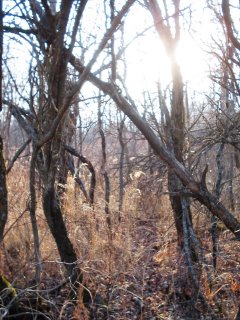
"...There is nothing to do but to warm myself on my own. There is nothing to do but to burn my own body and light the place around me..."

 On the subject of my last post, I just want to mention that this website-project makes me very, very happy:
On the subject of my last post, I just want to mention that this website-project makes me very, very happy:


 My great-grandfather, Vasyl Myhovych, was conscripted to fight in the First World War. He was a peasant from the province of Halychyna, the backwoods of the Austro-Hungarian empire, and thus, he was considered expendable. Living in Nebyliv, he was so far removed from Sarajevo & the assassination of the Archduke, the rest of Europe, he was probably not even initially told why he was fighting. (Sounds familiar, yes?)
My great-grandfather, Vasyl Myhovych, was conscripted to fight in the First World War. He was a peasant from the province of Halychyna, the backwoods of the Austro-Hungarian empire, and thus, he was considered expendable. Living in Nebyliv, he was so far removed from Sarajevo & the assassination of the Archduke, the rest of Europe, he was probably not even initially told why he was fighting. (Sounds familiar, yes?) I was reading a sort of silly little article in the kitchen sink magazine which was speculating which musician's lyrics particular poets might want to inscribe on their jeans. it was all catalysed, you see, by the fact that Bono of U2 has a clothing line, now, & there are lines by Rilke on the inside of the pocket in the jeans. Which is rather pretentious, I think... but the article amused me in that it decided Walt Whitman might like Rufus Wainwright's words in/on his pants, & I agree with that.
I was reading a sort of silly little article in the kitchen sink magazine which was speculating which musician's lyrics particular poets might want to inscribe on their jeans. it was all catalysed, you see, by the fact that Bono of U2 has a clothing line, now, & there are lines by Rilke on the inside of the pocket in the jeans. Which is rather pretentious, I think... but the article amused me in that it decided Walt Whitman might like Rufus Wainwright's words in/on his pants, & I agree with that.
There is a scene that has become part of my photographic memory; near the end of the film, the spirit of Marichka is luring Ivan into the woods. He follows her through the labyrythine pine trees, dizzy in the snow, and her face has the sheen of dull blue ice. She is reaching toward him, closer and closer, and when her anemic little fingers touch him, the screen goes black. Then, three shots flash by in quick succession -- three view of curling, twisting, red-willow branches against a grey sky, fleshy as arteries full of blood, & then darkness again. The next scene shows Ivan being prepared for burial.
This transition, with the branches, is so striking to me... I have often associated trees with both the circulatory & pulmonary systems of the body in my writing... last week I noticed when walking home in the dark that the mountain ash tree on my front lawn, heavy with berries, appeared as a large upside-down heart... spreading branches like arteries arising from the atria, exploding red fruits like clots bursting into the sky.
As well, this scene in the film subtly symbolizes how in death we dissolve into the environment -- our bodies physically decay, maybe a tree sprouts from the dust of bones, & our spirit too, our energy, becomes released again into nature... According to Ukrainian traditional beliefs, the ancestors dwell within the land, & they are responsible for all new life -- the birth of children, & also the growing of new crops, plants, etc. They are the shadow of all life on earth, always present, watching over us.
Earlier in the film, Marichka appears as a little fawn after her death, grazing around the birch cross at her gravesite. Ivan cannot recover after her death, & the scene of her in the woods, calling to him represents him wasting away, dying, & reuniting with her. Then they are both part of the earth, together. They become the shadows -- as the ancestors they ensure life continues, in the little children pressing their faces to the window of the funerary hut in the last scene.
The other theme of the film (& Mykhajlo Kotsjubyns'kyj's novella) that resonates with me is artistic inspiration. Maybe it's less overt in the film, but in the written work we get a very strong sense of how the characters relate to the world around them, how it inspires them. Marichka is a poet, composing & singing songs, Ivan is a little mystic, able to see & feel the spirits in the world around him. In death, they cross the barrier between themselves & the land that inspires them, they themselves become part of the earth's regenerative & creative force. They become shadows, they also inspire the legend that is the book & the film... Kotsjubyns'kyj wrote the story based on the stories & songs he heard about Ivan & Marichka while visiting Hutsul villages in the eastern Carpathians.
This film is so important to me because it resonates with how I feel connected to the world & to my own ancestors/ancestry. I highly recommend watching it, but I recognize it could be confusing, what with poor subtitling & a lot of folkloric references... Marco Carynnyk's translation of the novella is the the Rutherford library & also includes a translation of one of Kotsjubyns'ky's ethnographic essays on the Hutsuls, which is rather useful.